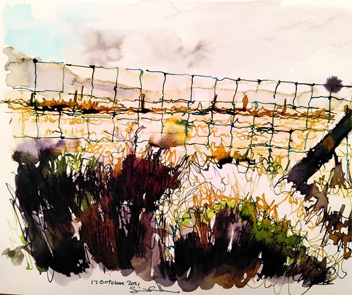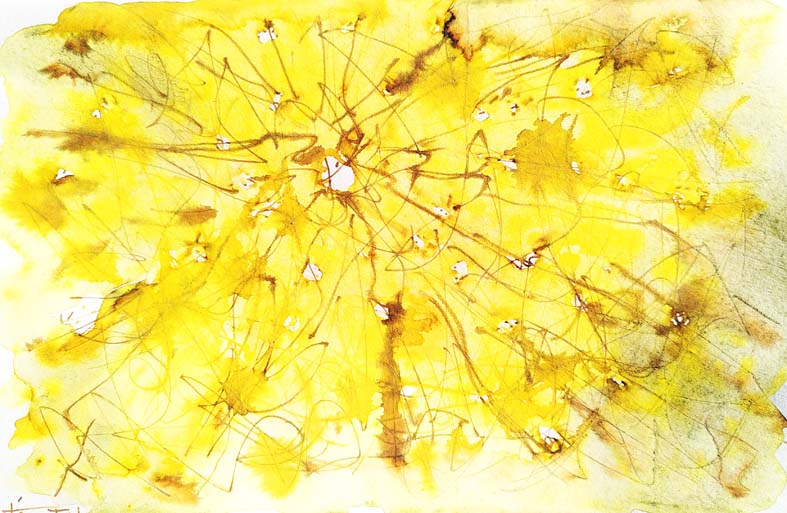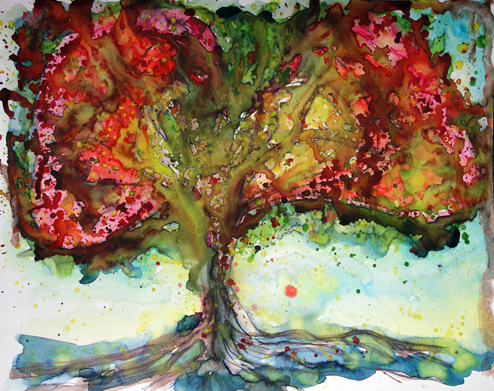8 Ways to find balance when things are out of whack
My two favourite subjects in school were physics and art. I loved the rigour and reason of physics, the freedom of art and the different perspectives I experienced moving between the two.
Personally I find comfort in experiencing the world in different ways. However, when I look around the world, I see polarised thinking, division and defensiveness. A ‘them versus us’, attitude. The rigidity in opposed perspectives on things like the pandemic and climate change are prime examples.
This polarisation feels uncomfortable in my body. It feels like my heart is under pressure and I can’t breathe properly. I wonder, can it be comfortable for anyone concerned, and how can we find our balance?
Recently I watched an interview with McGilchrist Author of ‘The master and his emissary’ and “The matter with things — our brains, our delusions and the unmaking of the world”. He referred to the two hemispheres of the brain as two different ways of seeing the world and answered questions I have been mulling over for years.
McGilchrist notes that we operate within false perceptions, as if science and reason are opposite to the humanities, intuition, imagination and spirit. But, he says, they are not in conflict: they are distinctions but do not have to be divisions. Instead of dividing we can choose synthesis (a process of unifying, balancing or resolving contradictions).
The right hemisphere perception of the world is about presence and being alive to what is, where things are interconnected and flowing, rich and complex.
The Left hemisphere perception tends towards fragmentation and compartmentalisation, it sees the world as isolated familiar details, simplifies and sees representations of reality.
Delusions of the left hemisphere
The left-brain makes sense of all the information we receive in the world by discerning difference. The problem is when we turn difference into division, and believe that one is somehow better than the other. We live in the delusion that the divisions are real.
“The left hemisphere’s prime motivation is power. If the left hemisphere were to have primacy, the world would seem mechanical, abstract, utilitarian, lifeless, over-confident of its own take and lacking insight into its own problems.”
Up development
We tend to see reason as a left hemisphere function but in actual fact, it requires both sides of the brain. Not only the domain of the mind but to think clearly also requires an embodied understanding of the world. Reason is not black and white but instead balanced, measured and open.
How do we find balance?
“The intuitive mind is a sacred gift and the rational mind is a faithful servant We have created a society that honours the servant and had forgotten the gift.”
Albert Einstein
You don’t need me to tell you what this delusion is doing to our world. Finding balance has become a priority but what could restoring balance look like? Here are 8 strategies to try out for yourself.
1. Start with your personal perceptions
The place to start is with ourselves, otherwise, as changemakers, we go into groups with the same old presumption what we know the answer. It is all too easy to jump to thinking about what other people should or could do (I’ve been there all too many times).
We need to bring awareness to what is ours and to what might belong to someone else. Ask yourself, are you seeing a division where there doesn’t need to be one?
2. Seek to understand
Understanding is an on-going process, it is not fixed. We seek to find balance by learning and reading on both sides of the argument — reading what the ‘other side’ reads in order to understand their perspective, for example. This means mentally and emotionally moving to find space for other perspectives, holding the idea and heart space that there could be another way to see things. You might not agree with it, but it could exist and the different perspectives do not have to be in conflict.
3. Engage your felt sense
To fully understand other ways of thinking, we need to come back to our own felt sense, which requires slowing down and bringing our attention to our body, breath and noticing sensations of e.g. tension or pressure, aliveness or dullness, lightness or heaviness.
Movement and conscious dance are powerful ways of engaging this felt sense. Finding fluidity in movement is about balancing left and right, forwards and backwards, fast and slow, large and small movements while noticing the quality of our attention and being present to the felt sense of what is.
Movement is a way of physically accessing this idea of balance through viscerally feeling the process in our bodies — this tells the brain and the nervous system that we are safe.
4. Nourish your relationships
Life is about being in relationship to ourselves, our environment and others (friends, family, co-workers and those with different perspectives).
Finding balance in our relationships can be as simple as paying attention. We can find our balance in relationship to nature through the simple act of bringing awareness to how it feels to walk barefoot on the beach or to sit and look up at sunlight through branches. In doing so we restore balance between feeling the world around us and the felt response inside.
We can also do this in our relationship with others. This can be done beautifully through movement, without words or explanation. I have met some of my best friends on dance floors, finding wordless connection through seeing them and letting myself be seen. I have always been amazed with how well you can ‘know’ a person through this practice.
If dancing is not your thing, this practice of offering your attention to another can be done in other simple ways in your daily interactions: a simple smile of recognition or sharing a moment of kind eye contact and acknowledgment.
5. Create spaces to talk
The more you suppress something the more power you give it, so it is really important to brings things into the open through dialogue, which is only possible when there is a safe space for that dialogue.
This can be done by creating group agreements on things like behaviour, start and finish times, taking turns speaking and finding ways of including everyone’s voice in the conversation (like using a talking stick). Rather than using statements of fact we can make agreements around the language we use: encouraging language that is inclusive and allows for other perspectives e.g. “Yes and…” , “What if…” etc. By making these agreements we begin on common ground; speaking about what allows us all to feel safe.
6. Learn to listen and observe
Balance can be restored when we learn to listen with an open mind and heart. This takes practice but it can be a profound and healing way to hear other views — even when they are uncomfortable.
One way to do this is to bring some physical movement into dialogue by introducing ‘moving debates’: where people move along an axis in a room to denote the level of their agreement with different statements. With this approach you can get a picture of different perspectives in relation to each other, without engaging in an argument.
7. Take care with labels
Neither hemisphere of our brains is intrinsically good or bad. We depend on both to live a balanced life in all realms. We have been conditioned to quickly draw distinctions between good and bad. But life is rarely this black and white so it is important to drop unhelpful labels of right and wrong and seek to find ways of understanding as much as we can. Notice what labels you use, do they support synthesis or create division?
8. Balance your roles
For me the role of a changemaker is similar to that of a conductor artfully balancing all the elements of an orchestra.
It is the role of the changemaker to find balance in the work, to know when to step in or give space, ask specific or broad questions, speak clearly or listen deeply and ultimately pay mindful attention to avoid polarised or black and white thinking by engaging in an embodied, inclusive and mindful way.
So there are many ways of finding our balance. Perhaps we have a long way to go before we move away from the delusion of separation but I trust and believe that great things can happen through the power of one person making a change.
“Thats what I wish for people, that they will make contact again with a vision of a world that is not a heap of pointless fragments, that is not chaotic ugly and without meaning, which is not just one in which we are the playthings of chance and embroiled in war against all. But one that is beautiful, intrinsically complex, rich conscious and responsive.”
McGilchrist



